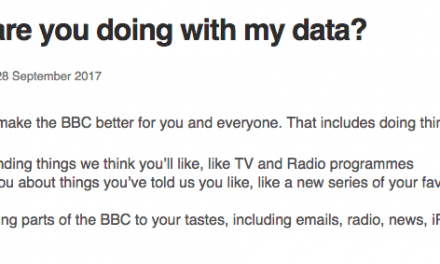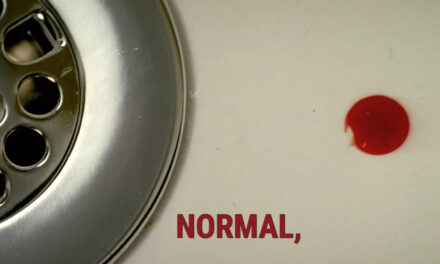Walton Goggins. What a name. Worthy of Dickens, everything about it just fits when you know his work: the Depression-era mountain-boy Sunday morning re-run buzz of the Christian name and the boggle-eyed hillbilly, gin n’ grog stutter of his family name. If you’ve been to the cinema recently you may well have noticed Goggins’s thousand-mile stare in action as Clay Hawkins in Lincoln and Billy Crash in Django Unchained. Thankfully there is more of him on television, the medium that really rewards fine acting over time, the only one in fact that allows artists to deepen, sharpen, elaborate (and, let’s not forget, occasionally ruin)the characters they pilot, inhabit and vitalize.
(As an aside, if one accepts this latter assertion as true, do you not agree with me how odd it is that so little has been written in television studies about specific performances, specific actors and their skills? Perhaps I am reading the wrong things, but celebrity studies and accounts of style and narrative seem to somewhat bypass, hurriedly in embarrassment, what is I think for many of us the primary aesthetic experience of television – fiction and non-fiction – which is the compelling presence of performing human beings in front of us. I wonder why?)
Goggins came to prominence as Shane Vendrell, number two in Vic Mackey’s corrupt Strike Team in The Shield, before guesting in the pilot of modern cowboy drama Justified as Boyd Crowder, a volatile member of a Harlan Country crime family who has a swastika tattooed on his left bicep and a penchant for blowing things up. In Elmore Leonard’s original short story on which the series is based Crowder is shot and killed at the end by the hero, Marshall Raylan Givens, but Goggins brought such a magnificent charismatic force to the role that the series could not have survived without him. In the first season after recovering from his near fatal bullet wound, he finds God, and sets out to thwart his father’s drug empire, recruiting a motley band of disciples to his evangelical flock. This allows the show to regularly place Boyd in situations where his oratorical gifts as a charismatic preacher can be exploited. The gentle resonance of his Southerner’s voice makes his speech compelling while still in the shadow of the creepy. Holding the Holy Book, with his buttoned-up shirt and crown of combed-back hair he strikes a vivid, concentrated figure, like a Roman nail about to be hammered into the cross. As Goggins’s charisma works on us, we see Boyd’s charisma work on his audiences in church and elsewhere: he enjoys the spectacle and seductions of his explosive talk just as much as the real explosions his earlier self detonated. But that does not mean he is hostage to impulse. Good preaching requires the patient, deliberative intelligence able to gauge mood, establish connection, and shape response, building to a climax of communal assent, readying the moment to strike, to detonate Faith’s holy energy.

By the second season Boyd has lost his faith, but not his ability as a speaker. And it is in that season, at least in its earlier episodes where Boyd is briefly doing honest work in the coal mine, when Goggins’s dirt-streaked, Ronsir-wearing performance has most resonance with figures from cinema history, particularly evoking the deliberative, uptight, nous of the working class intellectual criminal – think McQueen’s Doc McCoy from The Getaway, Nicholson’s Bobby Dupea from Five Easy Pieces or a less repulsive version of Kurtwood Smith’s Clarence Boddicker from Robocop.

Later seasons of Justified will found it hard to beat the staggering performances that the second season offered us (quite apart from the regular cast, Margo Martindale and Jeremy Davies as Mags and Dickie Bennett provided extraordinarily rich contributions), something half-acknowledged perhaps in the casting of Neal McDonough as a hyper-pumped pill-popping Detroit gangster called Quarles who is so overloaded with excessive tics and appetites that his role ultimately becomes incoherent. Nonetheless he provides the provocation for wonderful sit-down with Boyd, now reconstituted as criminal kingpin of Harlan County, where their conversation becomes a chess game that establishes the depth of their criminal acuity by exhibiting mutual knowledge of an obscure literary reference (Boyd quotes from a letter Saul Bellow wrote to Philip Roth in 1984!).
But reading books is one thing, knowing how to read people, and how to make them readable is another. In the most recent season Boyd once again returns to the setting of the church, this time to a brother-sister team of rattler-handling evangelicals converting the low-life of Harlan County to Jesus and away from Boyd’s supply of drugs, drink and prostitution. Goggins is unlike any other actor I know in his ability to alternate between deadly, hypnotic stillness and sudden, galvanizing expression. His words become weapons, tools, instruments with which he stimulates the responses required in the spaces he dominates while speaking. Boyd’s visit to the evangelicals’ makeshift tent pits his preaching skills against those of the younger charismatic, Billy St. Cyr (Joseph Mazello). Mazello draws on righteous unworldly yaps of wide-eyed faith as a shield against Goggins’s long-barreled drawl and pitchy gaze, but when Boyd challenges him to handle a venomous rattler in front of his flock (he has discovered the sister has been milking the venom out of the ones she gives to her unknowing brother), I realized for the first time what it was about Goggins that is so hypnotic. As Billy holds the sinuous rattler aloft to the congregation, showing them and us the fascinating motion of its smooth coiling and uncoiling as it moves over human flesh, and then suddenly its deadly jabbing dart as it strikes… what else is Boyd, but the Serpent, silky-tongued, charismatic, so much more interesting than Raylan, our putative hero? Is this similarity something Boyd himself might acknowledge as he watches Billy’s faith destroyed by snakebite, an echo of the way his own father destroyed his faith, his spirit? Milton may have had the idea first but Justified and Walton Goggins have returned us to the compelling, familiar story of eloquent darkness that is, by its own lights, unjustly wronged.

(As a reply to my aside: a good example of fine attention to specific television performance is William Rothman’s wonderful account of this show in his chapter, ‘Justifying Justified’ in Jacobs and Peacock, Television Aesthetics and Style.)
Jason Jacobs is Reader in Cultural History in the School of English, Media Studies and Art History, University of Queensland. He is author of The Intimate Screen and Body Trauma TV. He is currently working on an Australian Research Council funded project called ‘Worldwide: the history of the commercial arm of the BBC’. His BFI TV Classic on Deadwood was published in July 2012. He is writing a book on David Milch for the Manchester University Press Television Series and is co-editor with Steven Peacock of the forthcoming collection Television: Aesthetics and Style (Continuum).





